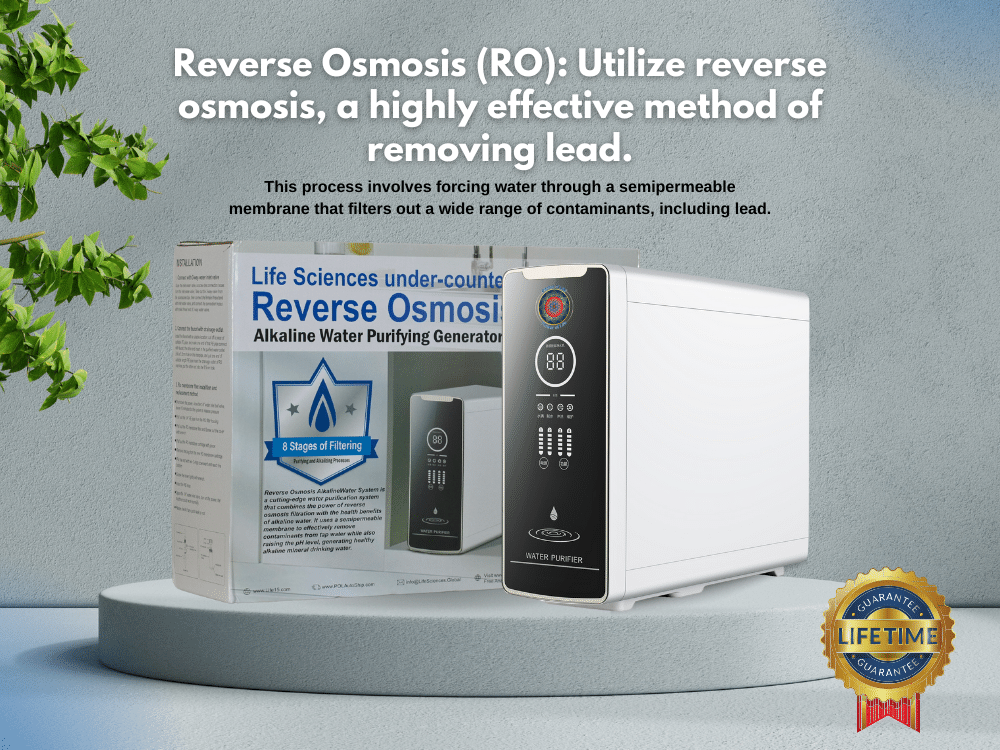In our quest for a brighter future for our offspring, it is vital to acknowledge the growing issue of heavy metal pollution, particularly lead, infiltrating our drinking water. This pollution has detrimental effects on children’s growth.
The consequences of this poisonous metal contamination can be devastating, resulting in developmental setbacks, behavioral challenges, and permanent harm to the brain and nervous system.
It is important to understand the effect of lead contamination on our children’s health. Consequently, we must take proactive measures to protect them from these harmful toxins.
Sources of lead metal contamination
The Art of Painting: One of the most prevalent sources of exposure lies in ancient paint, particularly in domiciles built before 1978. Paint infused with this toxic metal may deteriorate, resulting in chips or flakes that generate dust particles, which children may inhale or ingest.
The Earth Beneath Our Feet: Lead-contaminated soil, a clandestine perpetrator, often lurks near thoroughfares and industrial sites. Even low exposure to this soil can harm children playing outside. Tap water is the major source of heavy metals exposure. Which includes lead pipes, faucets, and plumbing fixtures, contribute to the metal present in tap water. The following are common ways toxic metal enters tap water:
Lead Service Lines: Certain homes have service lines connecting household plumbing to the main water line, which may be lead-based. As water flows through these lines, it accumulates metal particles, contaminating tap water.
Plumbing Materials: Even without lead service lines, other plumbing components may contain toxic metals. which includes lead-infused brass faucets, chrome-plated brass faucets, galvanized pipes, and plumbing.
Chemical reactions: Corrosion can introduce lead into tap water through chemical reactions that cause pipes and fixtures to dissolve or erode. Multiple factors influence corrosion extent. This includes water acidity or alkalinity, mineral content, the amount of lead in contact with the water, water temperature, pipe condition, the duration of water remaining in the pipes, and protective scales or coatings.
The Non-Drinking Water Fixtures: Water fountains designed for quenching thirst, adorned with tanks bearing a lead lining, and plumbing fixtures not intended for potable water (such as laboratory faucets, hoses, spigots, or hand-washing sinks), unwittingly contribute to the influx of this toxic metal into the water supply.

Children and infants in California face serious health risks from lead Contamination in their drinking water
- A recent investigation conducted in California has revealed distressing lead levels in licensed childcare centers throughout the state.
- These tests, conducted in adherence to Assembly Bill 2370, indicate that nearly 1,700 childcare centers have exceeded the permissible limit for lead in water provided to infants and preschool-age children.
- These findings raise concerns about California’s youngest residents’ prolonged exposure to lead-contaminated water.
The Issue’s Severity:
1. The test results suggest that babies and young children in California may have consumed water with very high lead levels for an extended period.
2. The RESULTS show that some childcare centers had lead levels as high as 11,300 parts per billion (ppb), which is 2,200 times the amount allowed by California for drinking water in childcare centers.
3. The American Academy of Pediatrics (AAP) suggests that lead in water should not exceed 1 ppb, emphasizing that there is no safe level of lead exposure for children.
4. Despite the major health risks associated with lead exposure, only 11 states and two cities mandate certified childcare facilities to test drinking water for lead.
Health Risks Related to Lead Contamination Exposure:
Lead Metal, a neurotoxin that can permanently damage young children’s nervous systems. Even low concentrations of this toxic metal exposure can be linked to cognitive impairments, behavioral and learning difficulties, stunted growth, and hearing disability.
This toxic metal exposure in children has been linked to several adverse effects, including:
- Damage to the brain and nervous system: it can impair neurological development, leading to long-term cognitive and behavioral issues.
- Slow growth and development: Continuous exposure to this toxic metal can hinder physical growth and delay developmental milestones in children.
- Learning and behavior problems: its exposure is associated with learning disabilities, attention deficit hyperactivity disorder (ADHD), and behavioral problems.
- Hearing and speech problems: Children exposed to this toxic metal may experience difficulties hearing and speaking due to the harmful effects on the auditory system.
- Lower IQ: This toxic metal exposure during crucial stages of brain development can reduce the intelligence quotient (IQ). Its toxic effects disrupt cognitive processes, impairing memory, attention, and overall intellectual functioning.
- Decreased attention span: Children exposed to this toxic metal may have difficulty focusing and sustaining attention. Attention deficits can affect academic performance and social interactions.

What is the best way to detect lead metal toxic Contamination in blood?
- The blood lead level is measured in micrograms of lead per deciliter of blood (μg/dL). CDC uses 3.5 micrograms per deciliter as the blood lead reference value (BLRV) for identifying elevated blood lead levels in children.
- This reference value is based on blood lead data from the 2015-2016 and 2017-2018 NHANES cycles among children aged 1-5 years in the United States.
- Children with blood lead levels at or above the BLRV are among the top 2.5% of children in the U.S. with the highest blood lead levels.
- If a child’s blood lead level is above 5 µg/dL. the CDC recommends that parents and caregivers take steps to reduce their exposure to lead.

Prevention and Testing for Lead Metal Contamination
To reduce or eliminate toxic metal exposure in tap water, you can take several measures:
- Install a certified “point-of-use” filter: Install a filter certified by an independent testing organization to reduce lead (certified under NSF/ANSI standard 53 for lead removal and NSF/ANSI standard 42 for particulate removal). This filter should be used for drinking and cooking water. If you have a lead service line, install a filter for all drinking or cooking water.
- Reverse Osmosis (RO): Utilize reverse osmosis, a highly effective method of removing lead. This process involves forcing water through a semipermeable membrane that filters out a wide range of contaminants, including lead.
- Activated Carbon Filtration: Activated carbon filters remove organic compounds and heavy metals like lead by adsorbing contaminants onto the carbon surface.
- Use cold water for drinking and cooking: Only use cold water. Hot or warm water can have higher lead levels. Boiling water will not reduce the lead levels.
- Regularly clean floors, windowsills, and other surfaces to remove dust and debris containing this toxic metal.
- Wash children’s hands and toys often. Keep children away from peeling paint or areas where paint is sanded or removed. In 1978, the U.S. government banned lead-based paint in homes, but many homes built before that time still contain lead-based paint.
Conduct water testing:
To determine tap water composition, conduct water testing by entering your zip code at [http://www.LifeWaterReport.
Life Water Report offers a comprehensive water filtration system designed to eliminate lead from tap water.
Conclusion:
Lead metal contamination is a serious issue that can affect children’s health and development. To ensure children’s safety, lawmakers, regulators, and childcare facility operators must test and remediate lead in water sources.
Let’s work together to protect our future by protecting our children’s health and well-being.
Get a regular FREE water report analysis www.LifeWaterReprot.com htt
note: as high-quality healthy water can have a significant impact, we recommend you find a water filtration system that adds healthy alkaline minerals, or a water ionizer that created ionized, alkaline, antioxidant water. Look at the “filter information” section on [http://www.LifeWaterReport.
By drinking clean and safe water, the body is prevented from dehydrating, which can have both physical and mental effects.
Visit [http://www.lifewaterreport.
